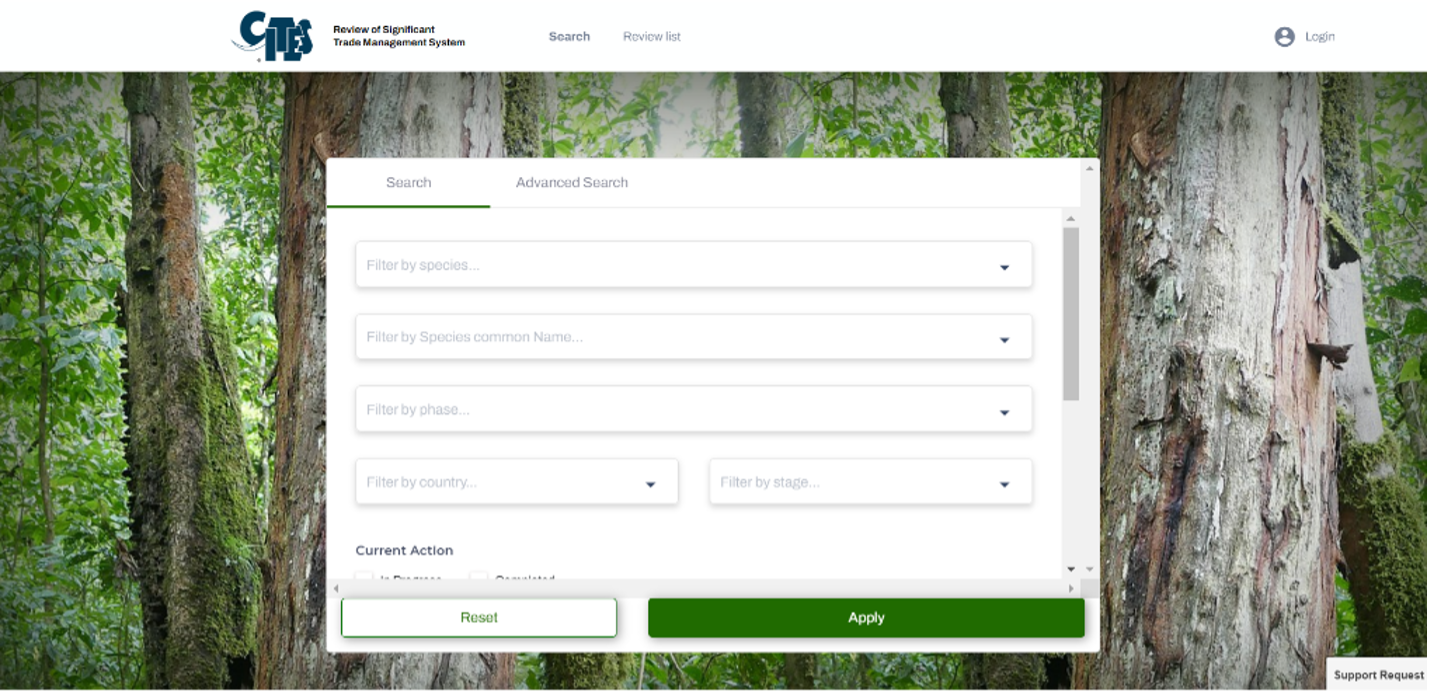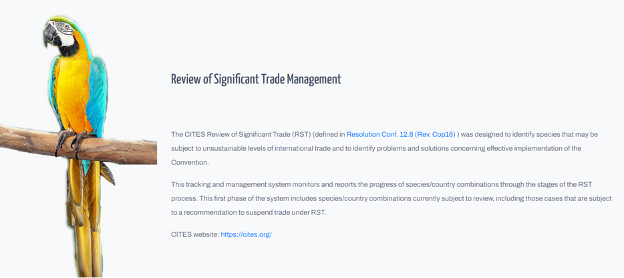UNICC delivers CITES RST Tracking and Management System for greater efficiency
UNICC launched a project with the Secretariat of the Convention on International Trade in Endangered Species of Wild Fauna and Flora (CITES) in February 2020 to develop a system to track and manage a core CITES process with a cloud-based solution.
CITES is an international agreement between governments. Its aim is to ensure that international trade in specimens of wild animals and plants does not threaten their survival. This new system, designed, developed, hosted and managed by UNICC, optimizes CITES’ Review of Significant Trade (RST) procedures.
The CITES Review of Significant Trade (RST) procedure was designed to identify species that may be subject to unsustainable levels of international trade, and to identify problems and solutions concerning effective implementation of the Convention.
CITES Resolution Conf. 12.8
The RST process identifies species that may be subject to unsustainable levels of international trade, and identifies recommendations and solutions to address the issue. The system provides a database for tracking these RST cases. The importance of a properly developed and delivered RST Tracking and Management System is critical to CITES’ efforts to regulate trade of wild animals and plants across borders between countries.
The value in UNICC’s delivery of CITES RST Tracking and Management System is rooted in the UN Sustainable Development Goals, particularly those concerned with biodiversity (Goal 14 and 15) and international partnerships (Goal 17).

The RST Tracking and Management System also serves as an essential tool helping CITES Parties to track the RST process and provides an easy-to-use platform for communication.
Key features
The RST Tracking and Management System includes a summary of the case details and status of all ongoing RST cases, any recommendations of the CITES Animals or Plants Committee (depending on the species) or the CITES Standing Committee directed to the Party concerned, and correspondence between that Party and the CITES Secretariat.
The system provides more transparency in the process and allows Parties, that are subject to the RST process, and other interested users, to track the status of recommendations and receive alerts on outstanding actions. It also provides a portal for Parties to communicate with the CITES Secretariat on progress in the implementation of these recommendations.

For the CITES RST system we followed a two-phased approach. The first phase focussed on detailed requirements-gathering, analysis and design. The system mock-ups and the proposed solution were presented to the stakeholders, including members of the Conference of the Parties (CoP). The second phase followed an Agile development process with excellent validation from the CITES Secretariat.
Gianluca Nuzzo, Application Delivery Team Lead, UNICC
The RST Tracking and Management System was developed using a ‘best-of-breed’ solution/technology approach and according to the chosen design. It utilises widely-recognized, open-source solutions and frameworks selected for the specific requirements of the application. The system is presented in a user-friendly, modern and intuitive design. Explore the RST Tracking and Management system here: https://rst.cites.org/public.
About CITES
The Convention on International Trade in Endangered Species of Wild Fauna and Flora (CITES) is an international agreement between governments. Its aim is to ensure that international trade in specimens of wild animals and plants does not threaten their survival.
Annually, international wildlife trade is estimated to be worth billions of dollars and to include hundreds of millions of plant and animal specimens. The trade is diverse, ranging from live animals and plants to a vast array of wildlife products derived from them, including food products, exotic leather goods, wooden musical instruments, timber, tourist curios and medicines.
Levels of exploitation of some animal and plant species are high and the trade in them, together with other factors, such as habitat loss, is capable of heavily depleting their populations and even bringing some species close to extinction. Many wildlife species in trade are not endangered, but the existence of an agreement to ensure the sustainability of the trade is important in order to safeguard these resources for the future.
Because the trade in wild animals and plants crosses borders between countries, the effort to regulate it requires international cooperation to safeguard certain species from over-exploitation. CITES was conceived in the spirit of such cooperation. Today, it accords varying degrees of protection to more than 35,000 species of animals and plants, whether they are traded as live specimens, fur coats or dried herbs.
CITES is an international agreement to which States and regional economic integration organizations adhere voluntarily. States that have agreed to be bound by the Convention (‘joined’ CITES) are known as Parties. Although CITES is legally binding on the Parties – in other words they have to implement the Convention – it does not take the place of national laws. Rather it provides a framework to be respected by each Party, which has to adopt its own domestic legislation to ensure that CITES is implemented at the national level. For many years CITES has been among the conservation agreements with the largest membership, with now 184 Parties.
Over 38,700 species – including roughly 5,950 species of animals and 32,800 species of plants – are protected by CITES against over exploitation through international trade. They are listed in three CITES Appendices. The species are grouped in the Appendices according to how threatened they are by international trade. They include some whole groups, such as primates, cetaceans (whales, dolphins and porpoises), sea turtles, parrots, corals, cacti and orchids. But in some cases, only a subspecies or geographically separate population of a species (for example the population of just one country) is listed.

